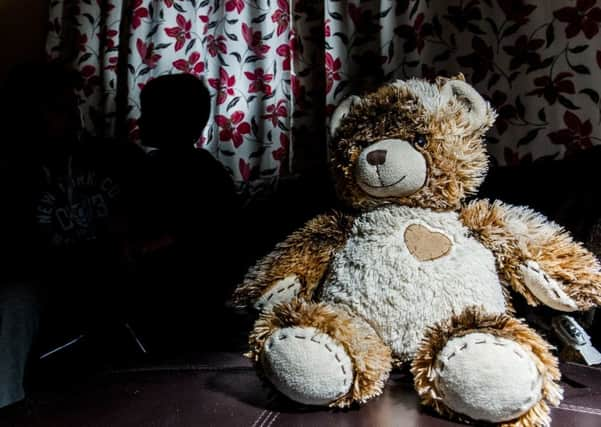More must be done to end our child poverty shame


The End Child Poverty in Scotland coalition, made up of a number of organisations including children’s charities and trade unions, claims over one in three children grow up in poverty in some Scottish areas.
The new figures reveal poverty affects children in every part of the country to some degree.
Advertisement
Hide AdAdvertisement
Hide AdThe rate of relative child poverty in Falkirk is 22 per cent – this is compared to 18.8 per cent for Stirling and 27.3 per cent for Clackmannanshire. Glasgow City tops the table at 34.1 per cent and North Ayrshire is second at 30.4 per cent, while Shetland Islands has the smallest rate at 10.6 per cent.
These stark statistics have led End Child Poverty in Scotland members, including Barnardo’s Scotland and Children 1st, to call for urgent action to be taken at the national and local government level.
Campaigners want Holyrood and local authorities to ensure the proposed Child Poverty (Scotland) Bill addresses poverty at a local level. They believe the Bill, which will make official the Scottish Government’s ambition to eradicate child poverty by 2030, should explicitly set out and support the role of local government and its community planning partners in tackling child poverty.
A Falkirk Council spokesperson said: “Tackling poverty across the board is a high priority for the council. Our ten year plan ‘Towards a Fairer Falkirk’ was launched in 2011 and sets out how we would tackle poverty and inequalities across our communities.
Advertisement
Hide AdAdvertisement
Hide Ad“We have recognised since then and despite a number of positive initiatives, there are many children within our communities who live in poverty.
“To reflect this, more recently addressing the impact of poverty on children and young people has been agreed as one of four priorities the Falkirk Community Planning Partnership will focus on, which includes the council and other partners.
“We’re looking at areas such as food poverty, cost of the school day and the stigma associated with poverty which we hope will address the impact poverty has on children and young people across the Falkirk Council area.”
Falkirk Council’s Towards a Fairer Falkirk: Tackling Poverty and Inequalities (2011 to 2021) strategy already deals directly with child poverty.
Advertisement
Hide AdAdvertisement
Hide AdThe document states: “In order to mitigate the impacts of poverty on children, we will aim to develop our Early Years Framework that sets out the council’s approach to targeting and working with our most vulnerable children and young people aged eight and under and their parents.
“We want to build on our approach to corporate parenting and ensure our most disadvantaged children have the encouragement and support to achieve – we also want to develop an approach to ensure children and young people are not disadvantaged educationally as a consequence of living in poverty.
“We want to increase young people’s confidence and self esteem and reduce the potential for our young people to develop harmful lifestyles.”
In general terms the council’s strategy targets those who have a significantly greater risk of entering or remaining in poverty – including households with younger children and with more than two children and households affected by drug and alcohol use.
Advertisement
Hide AdAdvertisement
Hide AdThe document also sets out communities in the Falkirk Council area which exhibit substantially higher concentrations of poverty than other areas – these areas include Bainsford, Langlees, Camelon, Grangemouth around Kingseat Avenue and other streets, Denny around Bridge Crescent and Church Walk, Maddiston and Westquarter.
End Child Poverty in Scotland members hope Falkirk Council will continue to make reducing child poverty a top priority.
Child Poverty Action Group director John Dickie said: “This new map also makes it clear child poverty plays out in different ways at local level. Local authorities and their partners know their communities and are in a great position to work with local people to prevent poverty.
“Many are already doing important work to make sure local childcare, housing and employability policies are working for low income families. The new Scottish child poverty legislation must now be drafted to ensure all local authorities are supported in law to take a strategic approach, and that all levels of government are pulling in the same direction – towards a Scotland free from child poverty.”
Advertisement
Hide AdAdvertisement
Hide AdMartin Crewe, director of Barnardo’s Scotland, added: “The latest map of child poverty across Scotland reflects the experience of our services working with families on low income day in day out.
“There is much good work taking place to support these children and families but, given their financial situation, changes in benefits that reduce income have a damaging effect on parents and children.
“We work in partnership with local authorities and public bodies in many areas to address these issues and recognise the key role they have in the ambition to eradicate poverty.”
Children 1st chief executive Alison Todd said: “Many of the children and families we support are becoming increasingly caught in a complex poverty trap. By working in genuine partnership with families experiencing poverty, local authorities can make a real difference.”